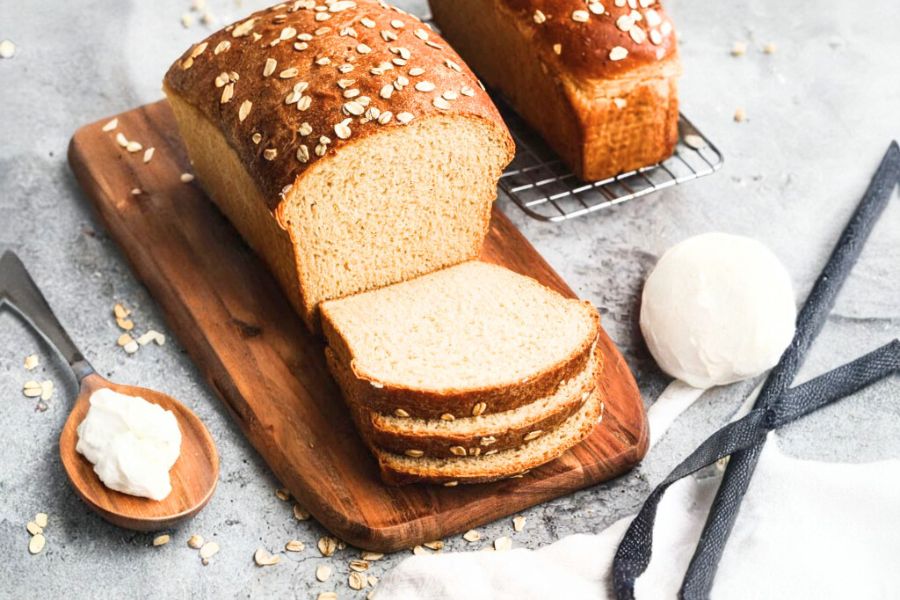Prep the Oat Mixture: Place the rolled oats and softened butter in the bowl of a stand mixer or a large mixing bowl. Warm the milk until it just reaches a light simmer, then pour it over the oats and butter. Stir well to combine, allowing the heat to soften the oats. Set aside and let this mixture rest for about 1 to 1½ hours, or until it cools to room temperature.
Activate and Combine Ingredients: Once the oat mixture has cooled, add the honey, warm water, instant yeast, and salt. Mix well until everything is evenly combined and slightly frothy. This will help activate the yeast and give the bread its perfect rise.
Build the Dough: Add the whole wheat flour and begin mixing on a low speed (or by hand) until incorporated. Gradually add all-purpose flour, a little at a time, just until the dough starts pulling away from the bowl and feels soft, elastic, and only slightly tacky. Avoid adding too much flour to keep the bread fluffy. Knead for 4–5 minutes in a stand mixer or 8–10 minutes by hand until smooth and stretchy.
First Rise (Bulk Fermentation): Lightly grease a clean bowl with butter or oil. Place the dough inside, turning it once to coat. Cover with a clean kitchen towel or plastic wrap and set it in a warm, draft-free spot to rise for about 1 hour, or until it doubles in size.
Shape and Prepare Loaves: Punch down the risen dough to release air bubbles, then divide it evenly into two portions. Shape each into a loaf and transfer to greased loaf pans. Brush the tops with the prepared egg wash for a golden crust and sprinkle a few dry oats on top for a rustic finish.
Second Rise: Cover the pans loosely with greased plastic wrap and let them rise again in a warm area for 45–60 minutes, or until the dough rises about 1 inch above the rim of the pans.
Bake to Perfection: Preheat the oven to 350°F (175°C). Bake the loaves for 30–40 minutes, or until they sound hollow when tapped or an instant-read thermometer inserted into the center reads 200°F (93°C). Allow the bread to cool for 15 minutes in the pans before transferring to a wire rack to cool completely.
